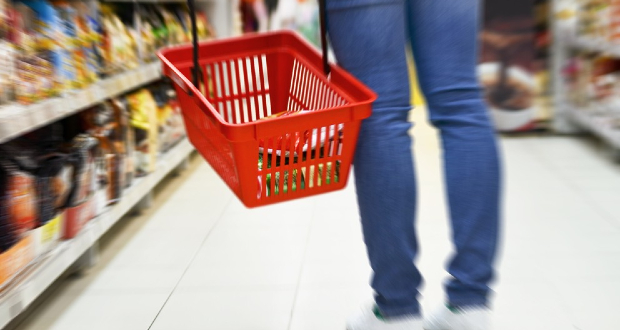While some analysts believe that it offers a further sign that the cost-of-living crisis may have passed its peak, inflation still remains close to a 40-year high – and it is five times higher than the Bank of England target of 2%.
Households will still be feeling the pinch as food prices rose by 16.9% in the 12 months to December 2022.
The price of butter, milk and cheese rose 30% year-on-year at some supermarkets last month.
Across the eight major supermarkets, butters and spreads rose by 29.4%, according to tracking by Which?
Milk was 26.3% more expensive than 2021, while cheese (22.3%), bakery items (19.5%), water (18.6%) and savoury pies, pastries and quiches (18.5%) also saw higher-than-average price increases.
Among the most extreme examples of inflation over the three months to the end of December were Utterly Butterly 500g, up from £1 to £1.95 across several supermarkets, Waitrose Duchy Organic Homogenised Semi-Skimmed Milk (1 pint/568ml) rising 87.1% from 65p to £1.22, and Creamfields French Brie 200g at Tesco up 81.6% from 79p to £1.43.
Kevin Bright, partner and global leader of the Consumer Pricing Practice at McKinsey & Company, said: “While clearly a step in the right direction, this slight slowdown in inflation is unlikely to be a relief to household budgets.
“According to the ONS, prices are still up by 10.5% versus a year ago, and by 16.5% over the last two years. And whilst wages have grown at the fastest rate in more than 20 years – 6.4% and 11.0% over the last 12 and 24 months respectively, they are not keeping up with rising prices.
“Taking that two-year lens, households are feeling the pain in the spending areas they can least avoid: essential categories including food and non-alcoholic beverages (up 21.7%), housing, water, electricity, gas and other fuels (up 35.3%), furniture, household equipment and maintenance (up 17.9%), and fuel and diesel (up 36.2% and 50.7% respectively).”
 Talking Retail Grocery and product news for independent retailers
Talking Retail Grocery and product news for independent retailers






